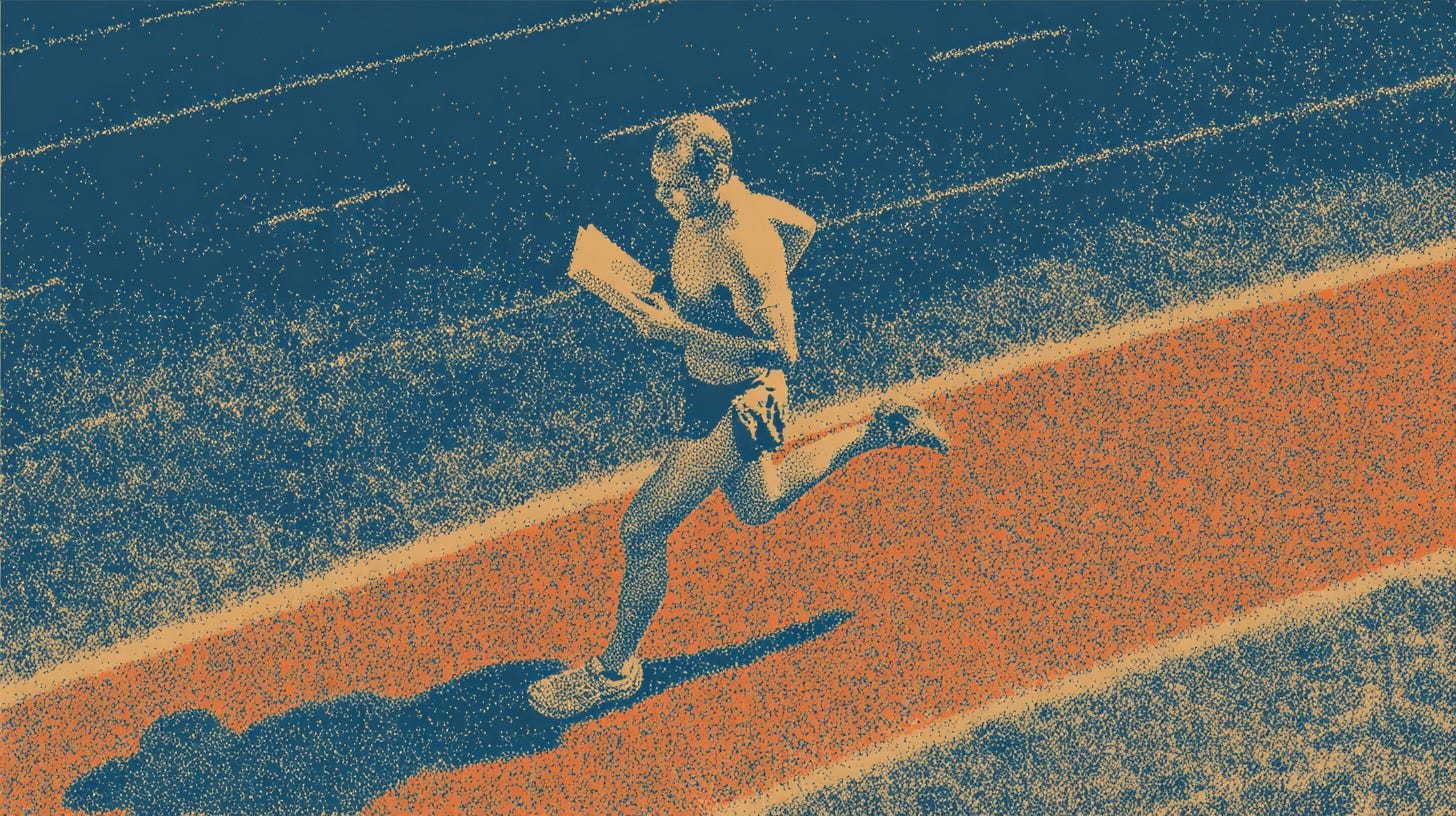Designing Your Own Learning Sprint
How self-designed curriculums 10x your understanding in a world of shallow knowledge
I've built a free assistant that helps you design learning sprints, structured curriculums that transform scattered browsing into deep expertise.
But first, let me explain why this matters more than you might think.
In my final semester, I walked into my department head's office with a proposal: let me design my own curriculum for product management instead of taking the outlined program requirements.
They approved it.
That experience taught me something most people don't discover until years after graduation — we're facing a learning structure crisis that goes far deeper than just post-school struggles.
Curious people have learned to trust their dopamine-driven instinct to seek out novelty. In structured learning environments, this drive toward new ideas and dynamic exploration serves them well.
Much better than memorization.
And post-graduation?
People are left completely structureless in an infinite information landscape, still driven by that same novelty-seeking instinct that served them well in school.
After 16+ years of structured learning, that same instinct has trained them to be permanently shallow.
Follow your curiosity becomes bad advice.
To be more specific, follow your blind curiosity becomes bad advice. If you do this it’s easy to go from learning about AI to physics to economics to marketing, all in one week.
It’s a devastating cycle: scattered accumulation → false confidence → application failure → imposter syndrome.
We live in a society that values consuming 90 ideas per hour over sustained thinking. Deep immersion in a topic is the only way to develop understanding.
Short-form content dominates because it feeds this false confidence of shallow knowledge, while deep expertise becomes increasingly rare.
The "every book should be a article, every article should be a tweet" mentality misses that sustained engagement is the value.
I would love to upload knowledge into my brain like Neo in The Matrix, but the reality is there’s no shortcuts to understanding.
Knowledge changes you only after you’ve spend time grappling with it, not when it's pre-digested for quick consumption.
Imposter syndrome is developed, not from a lack of ability, but because the digestion has been made too easy.
We get the rules without the process. This is why knowledge can become paralyzing.
When shallow knowledge is stress-tested through application it falls short, along with your confidence.
The Shallow Learning Trap
I repeated this cycle for two years post-school.
I'd devour books, feel enlightened, implement nothing substantial, then move on to the next promising title.
Even when I tried to be more selective, only reading books recommended by people on my Mount Rushmore, I was still consuming faster, not learning deeper.
Rediscovering Structure
The solution came from an unexpected conversation with Tyger Cho, who had unknowingly been applying the same curriculum-building principles I'd forgotten I’d used in college.
Tyger had been doing consistent “Learning Sprints,” as he called them.
A learning sprint is a self-designed curriculum that transforms scattered browsing into structured deep learning.
Instead of jumping topics whenever curiosity strikes, you create a deliberate sequence for exploring one domain thoroughly. Resources build on each other, studied over weeks or months rather than consumed in an afternoon.
The learning sprints I have done have taken many different forms.
For example, I did one on branding.
It was 10 books, all biographies of people who’ve built great brands.
I chose these books because I wanted to understand the process great brands are built through and the mindset of these branders.
I needed to adopt the mental models these masters used to develop their own brands.
It was only in connecting the dots that you develop intuition in a specific field.
After months of reading these biographies, I discovered Steve Jobs obsessed over circuit board aesthetics that customers would never see because hidden beauty satisfied his own standards.
Howard Schultz banned perfume in Starbucks stores and removed food items to preserve coffee's aroma. The sensory details created subconscious “brand texture”.
Richard Branson over-engineered Virgin Trains with "unnecessary" safety features that made them heavier and more expensive to run, but when an accident occurred, passengers walked away and Virgin's reputation for safety was cemented.
These stories taught me the things customers never consciously notice become the foundation of what they feel about your brand.
This insight would never emerge from reading Kellogg on Branding, or any single framework book.
It only surfaced after sustained immersion across multiple examples, when patterns started crystallizing from accumulated mental models. That's the difference between consuming information and developing intuition.
But I needed to understand why it worked.
Rather than designing my second learning sprint, I decided to become a student first.
I wanted to immerse myself in someone else's curriculum structure so that I could see their process and understand what made it effective.
Learning From a Master
Keep reading with a 7-day free trial
Subscribe to Genius Margins to keep reading this post and get 7 days of free access to the full post archives.





